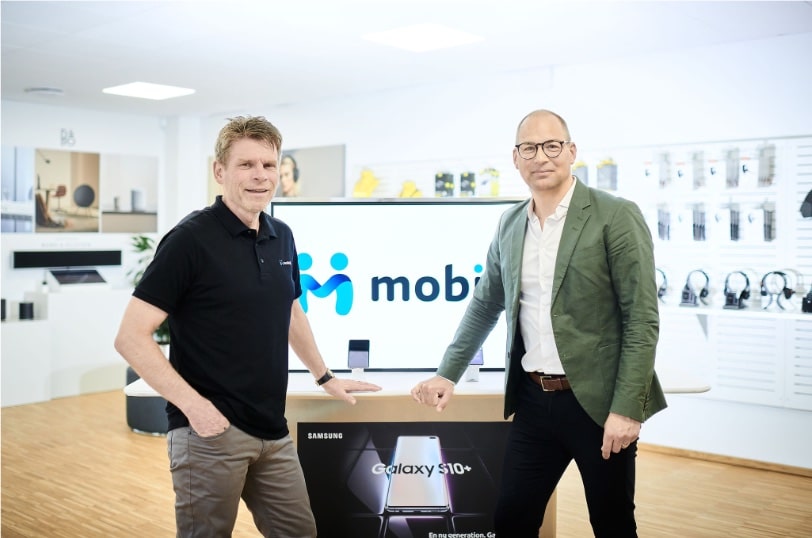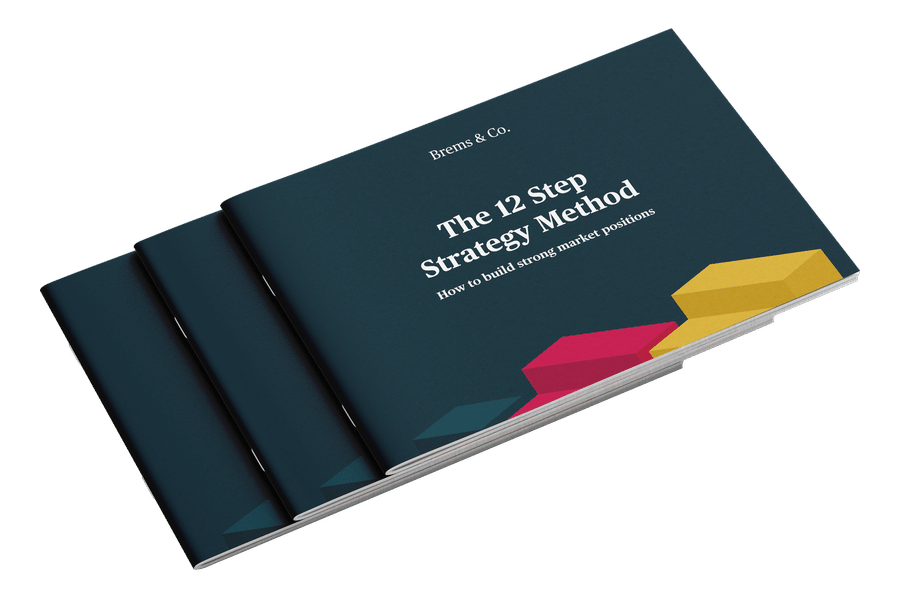New business models require a new marketing approach
Even though we are truly tired of talking about the Corona Virus and what it has caused – and causes – for our lives, we must admit that the world has changed almost overnight. The approaches to marketing have raced in one direction – and that is the digital direction. New business models, which only were in their start-up phases or not even thought of before Corona, have been matured rapidly. Fortunately, many businesses have kept up with the pace. But in the heat of the struggle, many have neglected one essential factor; new digital business models require new thoughts on marketing and marketing organizations. The automotive industry, where the segment of car dealers is highly afflicted, is a good example of the before-mentioned situation.
By Martin Brems, Strategic Advisor and Founder, Brems & Co., 8 September 2021
Begin by understanding market’s need
In August this year, I have spent a huge amount of time searching for my next car. As a consumer, it is not easy. We are in the middle of a paradigm shift. Electric power is in earnest making its entrance. Where plug-in hybrid electric vehicles provide you with both possibilities, the petrol- and diesel-fueled vehicles are put to shame. But is the charging speed good enough at present? Do I dare to stake the next choice of car on an electric vehicle – or should I wait? A lot of questions arise. Furthermore, the car brands have begun to denouncing contracts with their long-time loyal car dealers because they see the digital opportunity to sell directly to the consumer. Not only does the consumer have to be aware of the above-mentioned situation, but you also must be able to figure out the future of the government’s taxes on the different types of vehicles. Do you see the challenge?
”The automotive industry has completely missed out on their new role”
In August this year, I visited seven different car dealers. Not even one asked about my needs. To compare the experience, it is with a trip to the supermarket to buy a carton of milk. One salesman even indicated that it is a lot easier to sell cars today because the prices are fixed – and you are only able to buy the car online. In other words, the salesman avoids the “hassle” with the bargaining of price. Some of the salesmen swear by pure electric vehicles, others by plug-in hybrid – until you recognize they are not advising you but rather trying to sell what they have in stock or make the biggest profit on.
Note that car dealers no longer are salesmen – they are counselors. Not only in favor of their own brands but in favor of the customers too. When the car brands have denounced all their car dealers and the car dealers continue to only sell and not counsel, where does it place the car dealers?
Sell a solution – not a product
Exactly this transformation from being a salesman who is selling a product to a counselor who counsels about a solution recurs in many businesses where advanced technology in their products and digitalization creates new demands to the salesman’s approach and the decision-maker. In the case of the car dealer, it is not about selling a car, but about selling the best compatible solution to the customer regarding driving expectations, price-sensitiveness, economy, design, functionality, etc. For the car dealer, the aim is not only to sell the car but to sell the best car experience on all parameters.
Tell the good story
One of the important parameters is to narrate the selling story. Again, none of the seven car dealers were able to tell me the story about why I should buy exactly one of their car brands.
The quote, “He who owns the narrative owns the future”, fits very well with Tesla which for a couple of years ago orchestrated the future of electrical vehicles and very rapidly narrated their own story and market position on the market for electric vehicles. Every car brand has access to the same technology and almost every product has the same functionality. It is more difficult to differentiate from one another. So, which narrative do you and your brand own?
”Car dealers no longer are salesmen - they are counselors. Not only favor of their own brands but in favor of the customers too"
Tailor the business model to the needs
With everything new, there are always higher entrance barriers, and the customers and consumers are hesitating to buy because of the uncertainty about whether they are choosing the right thing. In this case, you must meet the customers exactly where the level of uncertainty and the economic risk provides enough assurance for them to buy. If the customer is uncertain regarding an electric vehicle, then why not provide the customer with a one-week trial of the car? Or if one finds it annoying to spend two days driving to Austria for a skiing holiday, then why not provide the customer with a rental car as an alternative? Mentioning it again, find solutions that match the needs and are lowering the entrance barriers. Or as a car dealer cleverly said; “Whether it is a purchase or a rental, if you are uncertain of the financing, then wait to settle your choice until the car is in stock again in five months”.
Adjust the marketing organization to the new business model
Whether you are selling cars or technical industrial components, new business models requires both a new mindset in the salesmen and adjustments in the marketing organization. Many businesses have already shifted their focus and resources from cold canvassing to inbound marketing which solely is lead generation through, for instance, Google advertising or social media. Many have already realized the sale of new technological industrial products that integrates with the customer’s IT systems require more profound knowledge and that it involves multiple layers and departments than usual. Therefore, compared to the traditional products, it also requires a different nature of salesmen and a solution-oriented approach (and a different sales cycle – often longer and more complex).
Right from the beginning, plan your sale ahead
If you as a business are well underway with transforming your business model, then ensure to integrate it with your style of selling and, furthermore, consider what it then requires from your existing marketing department.
Have you been inspired to start aligning your way of selling to your new business model, then you are welcome to download the growth tool, The Strategy Method© – 12 steps to growth, at https://brems.dk/en/the-strategy-method/. It is grounded in more than 100+ customer cases from the last seven years. Hope you get on well with your work!
Five steps to modify your sale to the new business models:
- Identify the market needs.
- Think solutions – not products.
- Narrate the selling story.
- Modify the business model to the needs.
- Align the sales organization to the new business model.
About Martin Brems, Brems & Co.
Brems & Co. helps companies and brands to generate growth through innovation and development of new strategies, business concepts, and brand platforms based on deep customer and market insights. Based on more than 100+ customer cases in the last seven years, the company has developed its own “The Strategy Method©” with 12 steps, which aims to develop strong brands, that make a difference in the world.
Brems & Co. is founded by Martin Brems who is a former marketing manager for Netcompany, Account Executive at advertising agencies in Copenhagen and Odense, and part of the management at LEGO’s innovation department, Future Lab. Questions about the column? Feel free to contact Martin on +45 6025 7572 or [email protected]
Read more...
Welcome to Toyota Material Handling as a new customer at Brems og Co.
Toyota Material Handling is number 1 in the world within forklifts. We have the pleasure of having to help with customer insight and initiatives for increased conversion and sales…
The 5-year plan is dead – what now?
You can’t develop your strategy as you usually do in 2021 - and Covid-19 is (unfortunately) a good example of why. Here are 5 suggestions of what you can do instead.
Brems & Co. gets full marks in customer survey
We have a Net Promoter Score of 100. Our customers gave us 4.9 out of 5 in output and project management and Martin Brems received personal and professional praise.
Sustainability has to be the core of COVID-19 recovery
Temperature swings, irresponsible production and economic downturn. Sustainability has been on the agenda for years, but things have changed during the pandemic. Even though novel…
Sustainable marketing strategy for world-famous fitness brand
Most people who have seen the American Netflix series House Of Cards are also familiar with the beautiful handmade wooden rowing machine WaterRower from the company of the same…
Welcome to Megatrade as a new customer at Brems & Co.
For more than 40 years, Megatrade has offered individual customer-specific solutions and services to e.g. hinges and fittings, based on their customers' business. Brems & Co.…
Sports stars and directors throw themselves in the sand at beach volley
Olympic gold winner, bank director, and business owner. These are some of the titles of the members of a networking group that meets early in the morning to play beach volley.…
Brands need to be more human
If one good thing has come from the COVID-19 crisis, it would be that it has given us time and peace to reflect on what it means to be human and part of a family.
Brems & Co. is heading the launch of a new telecommunication company
Mobitel wanted to renew their branding, communication and brand awareness after 19 years of collaboration with TDC as TDC Erhvervscenter Odense – with the same products and…










